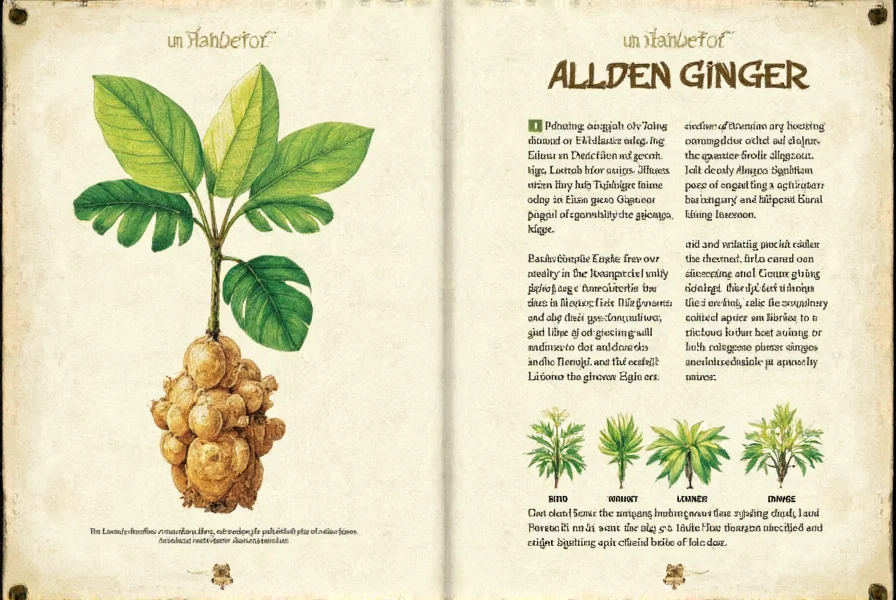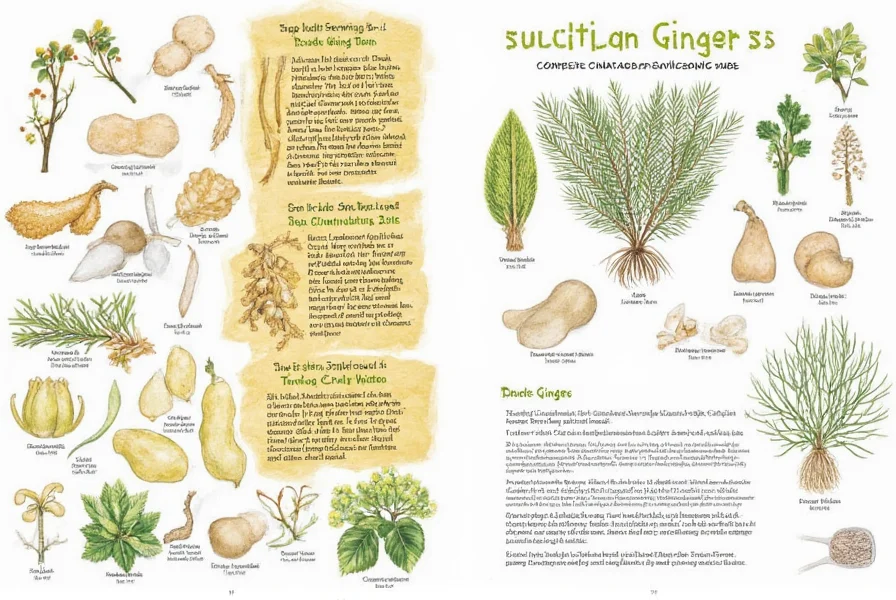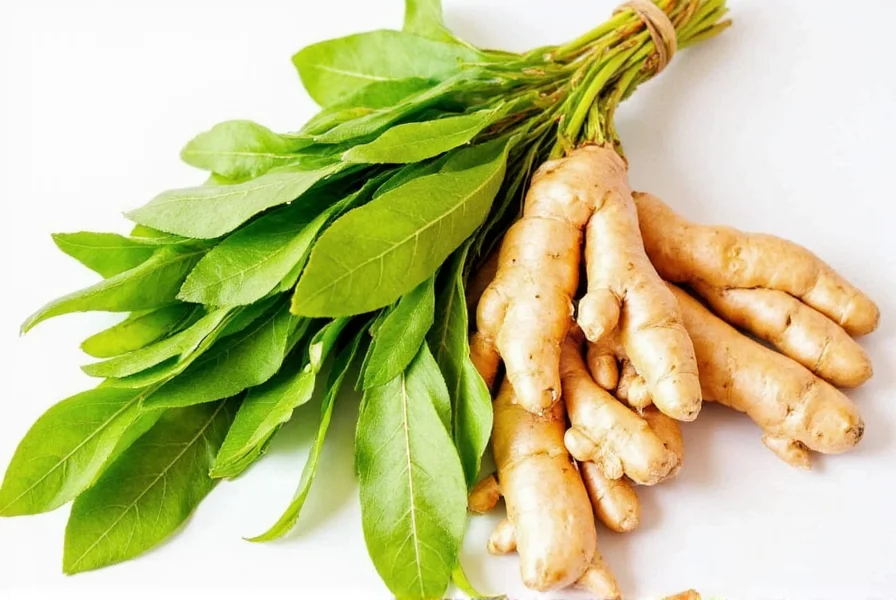When researching alden ginger characteristics, many gardeners and chefs discover this unique cultivar offers distinct advantages over common ginger varieties. Developed through selective breeding programs in the early 2000s, Alden ginger represents an important advancement in specialty ginger cultivation that balances traditional ginger qualities with improved growing characteristics.
Understanding Alden Ginger's Botanical Profile
Alden ginger (Zingiber officinale 'Alden') belongs to the Zingiberaceae family, sharing core characteristics with other ginger varieties while exhibiting specific differentiating traits. The rhizomes typically grow 6-8 inches long with smooth, pale brown skin that's easier to peel than standard ginger. Its internal structure reveals vibrant yellow flesh with a distinctive aroma profile containing higher concentrations of zingiberene (up to 35% more than common ginger) and lower shogaol levels, resulting in a less pungent, more citrus-forward flavor.
Unlike tropical ginger varieties requiring constant warmth, Alden ginger demonstrates remarkable temperate climate adaptation—a key factor in its growing popularity among home gardeners outside traditional ginger-growing regions. This adaptability makes growing alden ginger in cooler zones feasible with proper winter protection.

Growing Requirements for Optimal Yield
Cultivating Alden ginger successfully requires attention to specific environmental conditions. While more cold-tolerant than many ginger varieties, it still needs particular care throughout its growing cycle:
| Growing Factor | Alden Ginger Requirements | Standard Ginger Requirements |
|---|---|---|
| Temperature Range | 60-85°F (15-29°C); tolerates brief 45°F drops | 75-85°F (24-29°C); damaged below 55°F |
| Soil pH | 5.5-6.5 (slightly more acidic) | 6.0-6.8 |
| Water Needs | Moderate; 1-1.5 inches weekly | High; 2 inches weekly |
| Maturity Time | 8-10 months | 9-12 months |
| Disease Resistance | High resistance to rhizome rot | Moderate susceptibility |
For those implementing alden ginger cultivation tips, start with fresh, plump rhizomes showing multiple growth buds. Plant in early spring after last frost, positioning rhizomes 2-3 inches deep with buds facing upward. The variety performs best in partial shade (4-6 hours of morning sun) with well-draining, loamy soil amended with organic matter. Consistent moisture is crucial during active growth, but reduce watering as harvest approaches to prevent rot.
Culinary and Medicinal Applications
Chefs specializing in alden ginger culinary uses appreciate its more nuanced flavor profile that works exceptionally well in both sweet and savory applications without overwhelming other ingredients. The higher essential oil content makes it particularly valuable for:
- Infused oils and vinegars where its citrus notes shine
- Fresh applications in salads and fruit preparations
- Delicate baked goods where standard ginger might dominate
- Teas and tonics requiring milder ginger flavor
Research on alden ginger medicinal properties suggests it maintains the core anti-inflammatory and digestive benefits of standard ginger while potentially offering enhanced bioavailability of active compounds due to its unique chemical composition. However, specific clinical studies focusing exclusively on this cultivar remain limited.

Sourcing Authentic Alden Ginger
Finding genuine Alden ginger requires careful selection, as mislabeled ginger is common in the specialty plant market. When searching for where to buy alden ginger plants, look for:
- Certified nurseries specializing in heirloom and specialty ginger varieties
- Suppliers who can provide propagation history documentation
- Verified customer reviews specifically mentioning Alden cultivar
- Plants showing the characteristic smooth skin and bright yellow interior
Be wary of vendors claiming Alden ginger grows successfully in zones below 7 without protection, as this contradicts the variety's documented hardiness limits. The most reliable sources for alden ginger propagation methods are specialty ginger farms in the Pacific Northwest and select agricultural extension programs.
Comparing Ginger Varieties for Specific Applications
Understanding how Alden ginger compares to other varieties helps determine its best uses. While not suitable for every application where ginger appears, it excels in specific contexts:
- For fresh consumption: Alden's milder heat makes it preferable to common ginger in raw applications
- For preservation: Standard ginger maintains texture better in candying processes
- For medicinal extracts: Alden's higher essential oil content may yield more potent tinctures
- For container gardening: Alden's smaller mature size (3-4 feet vs 4-5 feet) makes it more manageable
Gardeners exploring alden ginger vs common ginger differences should consider their specific climate and intended uses when selecting varieties. The Alden cultivar represents a valuable option for those seeking a more versatile ginger with enhanced growing characteristics.
Is Alden ginger the same as common ginger?
No, Alden ginger is a specific cultivar of Zingiber officinale developed for improved characteristics. It features brighter yellow flesh, higher essential oil content, better disease resistance, and greater cold tolerance compared to standard ginger varieties while maintaining the core properties of culinary ginger.
Can I grow Alden ginger in containers?
Yes, Alden ginger grows well in containers due to its slightly smaller mature size (3-4 feet tall). Use a 12-14 inch wide pot with drainage holes, well-draining potting mix, and place in partial shade. Container growing allows easier winter protection in cooler climates by moving pots indoors before first frost.
What makes Alden ginger different for cooking?
Alden ginger offers a more citrus-forward flavor profile with less pungency than common ginger due to higher zingiberene and lower shogaol content. This makes it particularly suitable for fresh applications, delicate sauces, and dishes where a subtler ginger flavor is desired without compromising the distinctive ginger character.
Where can I find authentic Alden ginger rhizomes?
Authentic Alden ginger rhizomes are available through specialty ginger nurseries, particularly those in the Pacific Northwest. Look for suppliers who provide propagation history and can verify the cultivar. Agricultural extension programs and specialty gardening associations often maintain lists of verified sources for this less common variety.
Does Alden ginger have different medicinal properties?
While Alden ginger maintains the core anti-inflammatory and digestive benefits of standard ginger, its higher essential oil content may enhance bioavailability of active compounds. However, specific clinical research on this cultivar is limited. Most medicinal applications follow similar preparation methods as common ginger, with potential for more potent extracts due to its chemical composition.











 浙公网安备
33010002000092号
浙公网安备
33010002000092号 浙B2-20120091-4
浙B2-20120091-4